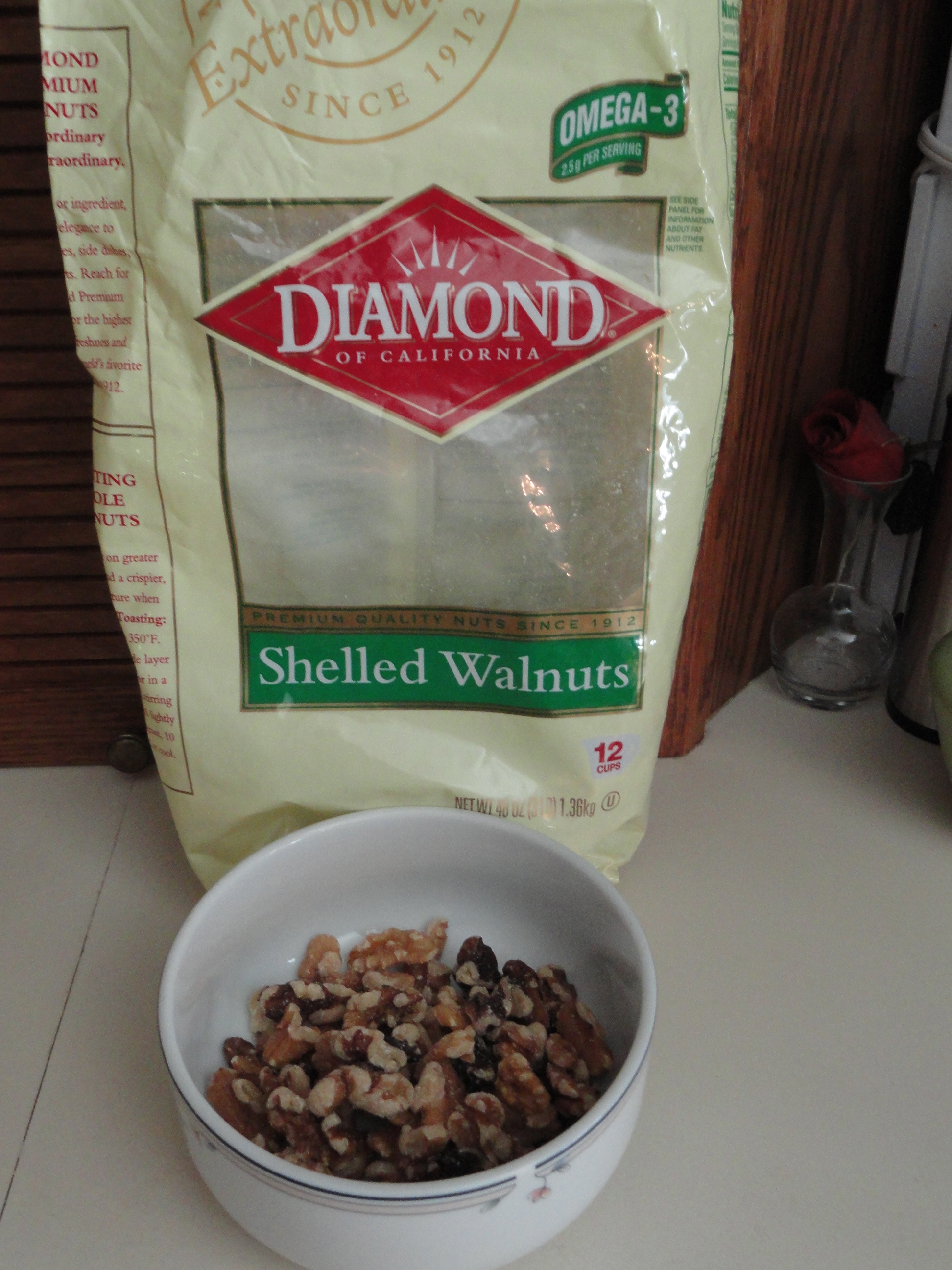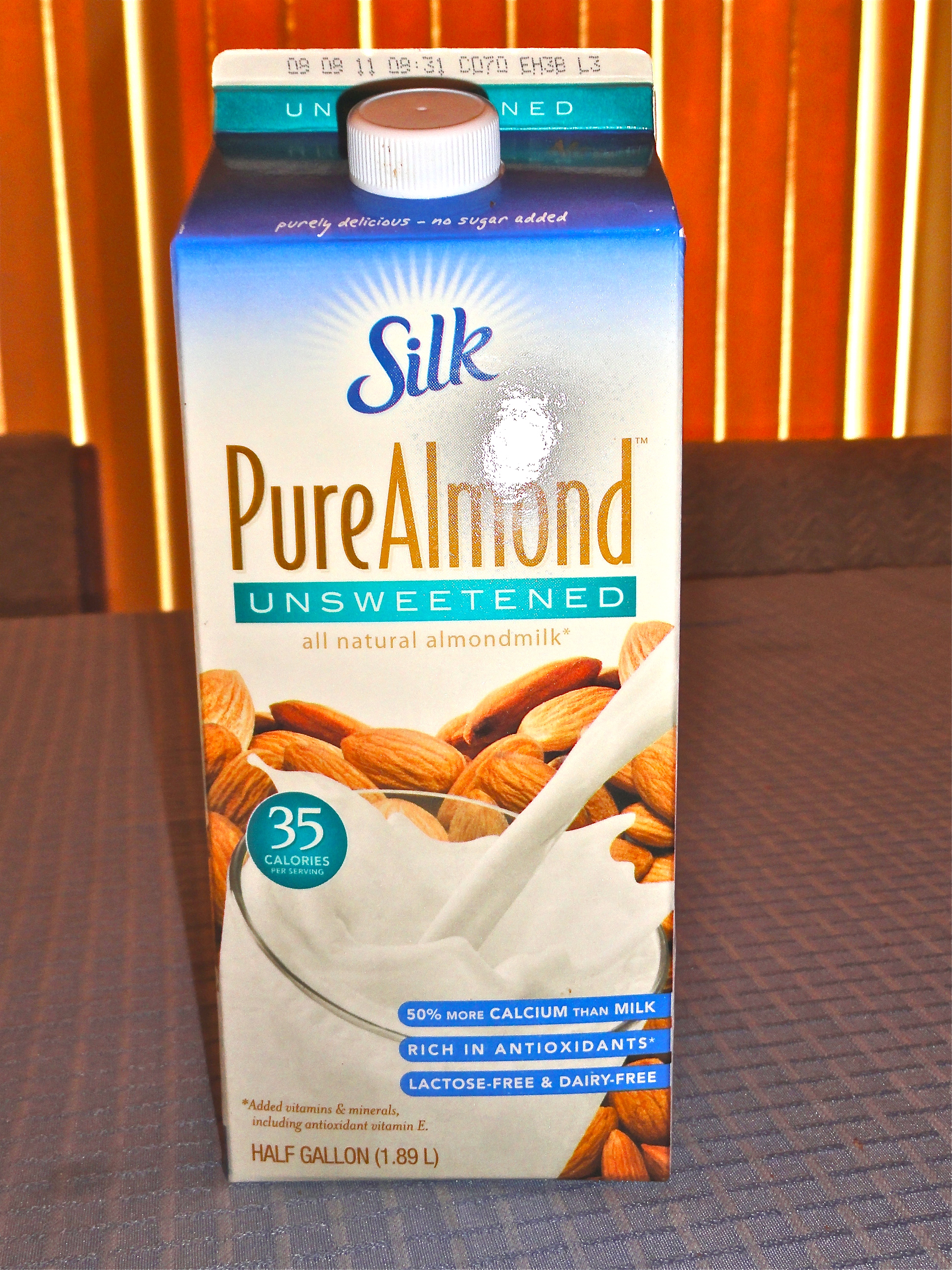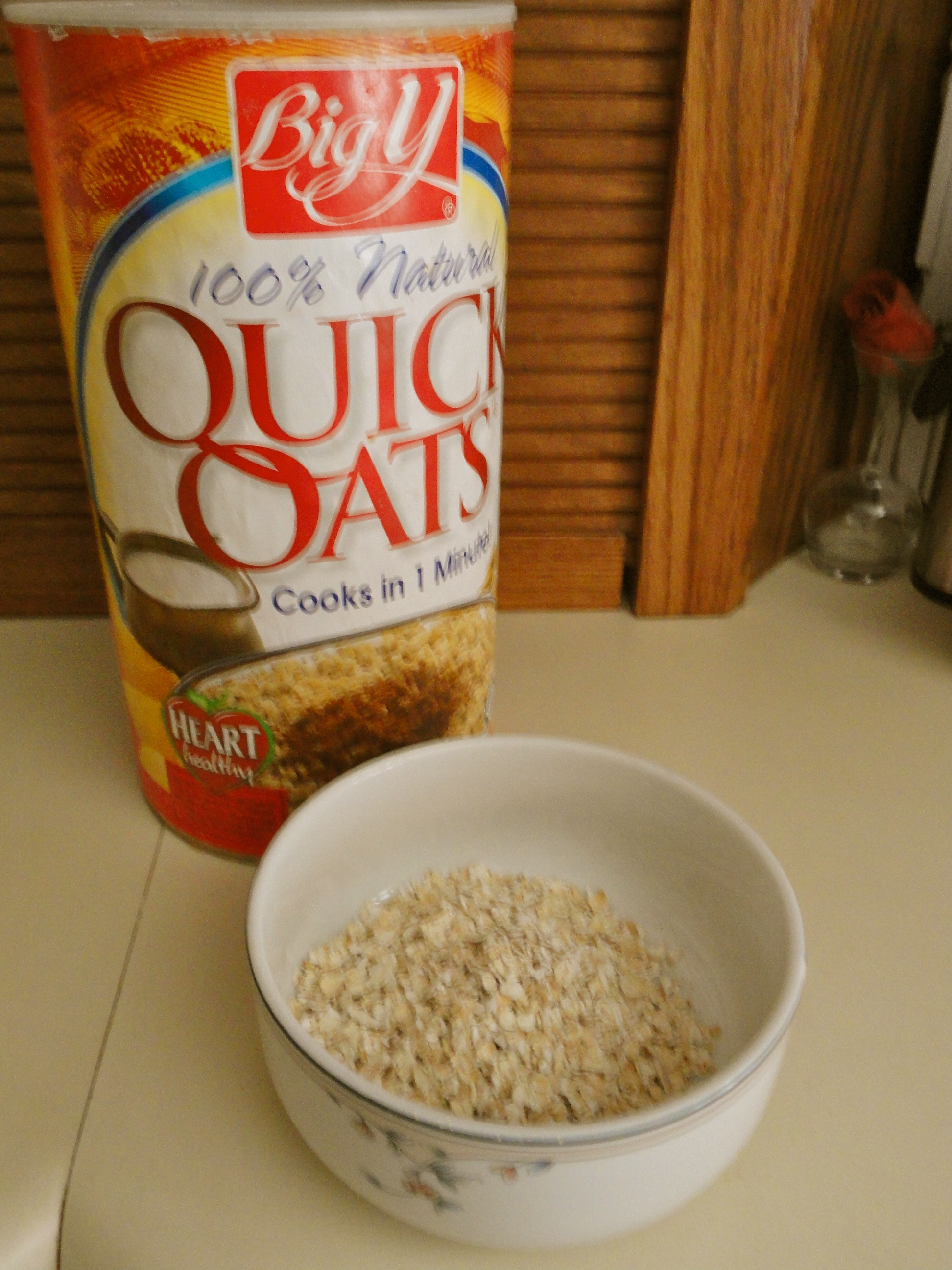For the last 10 years, I have woken up to a bowl of oatmeal each morning. Before you start groaning—I know some of you are imagining a food that feels (and tastes) like gluey gruel from the moment it enters it your mouth until the time it settles like a brick in your digestive tract. However, let me reassure you that this is no ordinary bowl of oatmeal.
First, I begin by chopping up apples, leaving on the peel. Then, I add a hearty dose of cinnamon. Afterward, I chop up walnuts, which I add to the bowl, with a nice handful of raisins. Finally, I add half a cup of water with a half a cup of almond milk. When cooked, a dreamy aroma rises from the bowl, thanks to the sweet, nutty milk.
It’s even kid-friendly. At age 3, my nephew was eagerly climbing into my lap to “share” my breakfast, after he’d already finished his own meal.
This little bowl of heaven gives me all the energy I need to sustain me throughout the morning and into mid afternoon. While satisfyingly filling, it is not too heavy that I feel like I’m carrying around a 5-lb weight in my stomach until lunch. Best of all, it is the first breakfast from which my body has fully absorbed nutrients that I can remember in more than half my life.
What, in addition to its flavor, makes this a breakfast of champions? Let’s break it down, ingredient by ingredient.
A decade ago, a team of Australian researches developed the Satiety Index, which measures how full people feel after eating a fixed calorie quantity of a variety of food. The study found that the more fiber, protein and water a food contains, the longer it will satisfy the body.
What does this all have to do with my power breakfast? Oatmeal was ranked as the most satiating breakfast food and the third most satiating food overall.
“Oatmeal helps you stay fuller longer, since it’s packed with fiber and is a good source of protein,” says David L. Katz, M.D., director of Yale Prevention Research Center, Yale School of Medicine.
Katz also recommends eating oatmeal for the beneficial effects it has on cardiovascular health. Many studies have shown that oats reduce low-density lipoprotein (LDL), “bad” cholesterol, while maintaining high-density lipoprotein (HDL) the body needs.
According to MrBreakfast.com, oats contain more soluble fiber than whole wheat, rice or corn. Higher levels of soluble fiber are linked to a reduction in high blood pressure. Paired with reduced LDL, oats can thus help reduce the risk of heart attack or stroke.
Because of the soluble fiber called beta-glucan, oats digest slowly over a longer period of time, stabilizing the blood glucose levels. This is key for those who already have diabetes, it may also reduce the risk of Type 2 diabetes for those who don’t.
Beta-glucan also stimulates the immune response to disease.
Oatmeal contains plant lignans that, when converted in the body, are thought to help protect against heart disease and hormone-dependent cancers, like breast cancer.
Oats are also a good source of thiamin, boosting energy and supporting the coordination of nerve and muscle activity, including proper heart function. Additionally, this glorious grain contains selenium, magnesium, manganese and phosphorus.
According to The Word’s Healthiest Foods, selenium and vitamin E work together to provide antioxidant benefits to the body, decreasing asthma symptoms and helping to prevent heart disease. Selenium is also associated with a decreased risk of cancer, particularly colon cancer, and is involved in DNA repair.
Does an apple a day really keep the doctor at bay?
A good source of soluble fiber, apples also contain quercetin, which has been shown to help ward off certain cancers, reduce cholesterol damage and promote healthy lungs.
Among the vegetables and fruits, research suggests that apples and pears are the best protection against asthma, according to the website for Lyman Orchards in Middfield, Conn. Eating apples has been linked to improved lung function and protection against effects of smoking, pollution and other irritants.
This fruit is high in vitamin C and potassium, low in sodium, and contain very little fat. They also contain phytonutrients like vitamins A and E, as well as betacarotene which, along with quercetin, reduce damage from free radicals. Free radicals can damage different parts of a cell, including its DNA, and is thought to lead to a number of age-related diseases like Alzheimer’s. Recent studies have linked apple consumption to improving the symptoms of Alzheimer’s—and potentially reducing the risk of developing it.
These suspected benefits are largely due to the pectin found in the peel, so learn to appreciate the rich flavor of a whole apple.
Pectin lowers blood glucose levels and blood pressure. It also may help reduce LDL cholesterol and fight inflammation. Like other forms of fiber, pectin contributes to a healthy digestive system.
According to the website Eat This, French researchers found that apples contain a unique flavanoid called phloridzin that may protect post-menopausal women from osteoporosis and also increase bone density.
Apples are a good source of boron, which is key to bone health and the prevention of osteoporosis. It also helps in the absorption and monitoring of calcium, magnesium and phosphorus levels in the body.
Additionally, there is some evidence to suggest boron increases estrogen levels is post-menopausal women and healthy men, which can help maintain healthy bones and improve mental function.
Apples are also good for your dental health, cleaning teeth with fiber and killing bacteria in the mouth, reducing the risk of tooth decay.
WALNUTS
 When I learned of the health benefits of walnuts, it was an easy decision to substitute my pecans for these hearty nuts. Of all the nuts, walnuts contain the highest amount of alpha-linolenic acid (ALA), the plant-based omega-3 fatty acid required by the human body.
When I learned of the health benefits of walnuts, it was an easy decision to substitute my pecans for these hearty nuts. Of all the nuts, walnuts contain the highest amount of alpha-linolenic acid (ALA), the plant-based omega-3 fatty acid required by the human body.
In ctwatchdog.com, a CT certified dietician Kathleen S. LaBella wrote that the skin of the walnut contained the majority of its health benefits with antioxidant and anti-inflammatory properties. According to her, the high amounts of vitamin E in walnuts may help protect against heart disease.
Walnuts are rich in polyunsaturated fatty acids, which may improve blood lipids and other cardiovascular disease risk factors. According to a 2009 analysis published in American Journal of Clinical Nutrition, diets supplemented with walnuts led to a greater decrease in total cholesterol and LDL over other diets. Additionally, walnuts may provide benefits on oxidative stress and inflammatory markers, with the bonus of having no negative effects on body weight.
The Yale-Griffin Prevention Research Center conducted a study that concluded a daily diet including 2 ounces of walnuts appeared to improve endothelial function in people with Type 2 diabetes.
“What it tells us is how the blood vessels are feeling in light of everything that is flowing by…And the blood vessels in this study said, ‘we feel better after we’ve been fed walnuts daily,” Katz, a coauthor on the study and director of the Yale University Prevention Research Center of subjects with Type 2 Diabetes told Medscape News.
“We know nuts are rich in fiber, and have a variety of micronutrients, minerals, B vitamins, magnesium, and a number of properties that make them a likely candidate for benefits in people with cardiovascular risk,” Katz said.
Diets in Review reported on a scientific study presented earlier this year that walnuts appeared to have more antioxidants of a higher quality than any other nut. A handful of walnuts contain almost double the amount of antioxidants than other nuts in the same quantity, according to Joe Vinson, Ph.D., who did the analysis.
Walnuts may also be good for our brains. According to California Walnut, British Journal of Nutrition published an animal research study that showed a diet containing the equivalent of a quarter cup of walnuts for humans was able to reverse age-related motor and cognitive deficiencies in older rats. Researchers concluded that, by delaying the onset of debilitating, degenerative neurological disease, a diet including walnuts might provide a “longevity dividend,” increasing “health span.”
Flavonoids and vitamin E in walnuts are also thought to help destroy free radicals that lead to dementia. They have been shown to decrease risk of Alzheimer’s.
Insomniacs may also want to look into adding walnuts to their diet. According to A Doctor and A Nurse, walnuts contain 2.5-4.5 ng/gram of melatonin. This is a hormone that induces and regulates sleep and is also a powerful antioxidant.
Most of us think of cinnamon simple as that delightful spice to add to sweeten a dish. However, there is more than meets the eye when it comes to this brown bark of the cinnamon tree. Surprisingly, cinnamon is also a source of fiber, calcium, iron and manganese.
As a result, one of cinnamon’s health benefits is to improve colon health. Calcium and fiber in cinnamon work together to reduce damage to colon cells.
Cinnamon has anti-inflammatory properties and may help bring relief to stiff muscles and joints. It also acts as an antibacterial agent, which can help halt harmful bacterial and fungi, such as candida.
The powerful spice loosens mucus, encouraging more productive coughs. It can also relieve indigestion, reduce the risk of blood clots and improve heart health.
According to a study presented in American Journal of Clinical Nutrition in 2007, seasoning a high-carbohydrate food with cinnamon reduced the impact on the blood sugar levels of the eater. Cinnamon slows the rate at which the stomach empties meals, preventing sharp rises in blood sugar after eating. It also improves the effectiveness of cells in people with type II diabetes to respond to insulin.
That study concluded that cinnamon helps to reduce the risk factors associated with diabetes and cardiovascular disease in people with impaired fasting glucose that are overweight.
In a 2010 LIVESTRONG.COM article by Maryann Gromisch, RN, who received nursing degree from Southern Connecticut State University, she wrote about a study that demonstrated memory, attention span and motor speed improved with the smell or taste of cinnamon.
Known as nature’s candy, raisins are more than a healthy, sweet treat. Free of fat and cholesterol, but full of fructose, glucose and minerals like selenium and phosphorus, raisins are natural energy boosters.
Research done at the University of Connecticut found that in one cup of raisins, there is 10 g of dietary fiber and approximately 3 g of soluble fiber according to a LIVESTRONG.COM article from earlier this year.
The fiber, potassium, and antioxidants all contribute to a healthy heart. The soluble fiber found in raisins contributes to lowering LDL cholesterol, while reducing blood pressure, inflammation and potentially the risk of cardiovascular disease.
According to Diets in Review.com, a recent University of Connecticut study concluded that raisin consumption and daily walking in men and women between the ages of 50 and 70 lowered the LDL cholesterol levels in the blood stream, as well as reduced the markers of inflammation associated with cardiovascular disease.
Potassium and magnesium in raisins help reduce acid in the body and lower the risk of gout, arthritis and heart diseases. Catechin, a type of antioxidant present in raisins, is also very effective for the prevention of tumor and cancer of colon.
Raisins are a source for phytonutrients that play a role in eye and dental health. Polyphenolic phytonutrients have antioxidant properties, which protect eyes from damage caused by free radicals, which lead to macular degeneration, cataracts and age-related weakening of vision. Additionally, vitamin A, betacarotene and carotenoid in the fruit are all essential for good vision health.
Polyphenols also have been show to reduce inflammation and have antibacterial properties. According to 3 fat chicks on a diet!, raisins kill bacteria that cause infections, which help to lower fevers.
Oleanolic acid prevents the growth of bacteria most responsible for cavities, decay and brittleness. Plus, unlike other foods that curb a sweet tooth, the longer you chew on raisins, the better: It gives teeth longer contact with the dental benefits of oleanolic acid, according to Organic Facts.
Raisins can also help fight iron deficiency, which causes weakness, bruising, cold sensitivity and fatigue. According to LIVESTRONG.COM, one cup of raisins provides about 17 percent of your daily requirement of iron.
Raisins are one of the top sources of the trace mineral boron in the U.S. diet.
ALMOND MILK
 Almond milk is a great alternative to those who are lactose-intolerant. If you can’t properly digest cow’s milk—or are allergic to it—rice milk, soy milk, coconut milk and nut milks are a sweet alternative.
Almond milk is a great alternative to those who are lactose-intolerant. If you can’t properly digest cow’s milk—or are allergic to it—rice milk, soy milk, coconut milk and nut milks are a sweet alternative.
Almond milk contains no cholesterol and little to no saturated fats, and it is a low sodium beverage. It has high levels of unsaturated fat, associated with lower risk of heart attack. The amount of potassium also promotes healthy blood pressure and aids in a healthy heart.
This milk is also diabetic-friendly. The low amount of simple sugars has a low glycemic nature that is fully digested by the body and used as energy.
Almond milk has 25 percent of the recommended daily value of Vitamin D and 30 percent of recommended calcium. Together, these help strengthen bones. Magnesium also helps in the absorption of calcium. Some studies have also linked vitamin D with a decreased risk in osteoporosis and Alzheimer’s. It also helps improve immune and cell functions.
Each serving of almond milk contains 50 percent of our recommended daily value of the antioxidant vitamin E, which also helps regulate vitamin A use and availability, according to 3 fat chicks on a diet! Vitamin A directly impacts the eye’s ability to adjust to changes in light.
Protein, riboflavin and iron can help in muscle function. Iron also aids in the regulation of oxygen absorption.
For those watching their weight, almond milk has fewer calories than fat-free, skim and non-fat milk.
The benefits of homemade almond milk top pre-packaged, processed almond milk products. A homemade recipe can be found here.
There is nothing better than that sweet, heady smell of my fruity, nutty, spicy oatmeal sitting before me first thing in the morning. Not only do I have its great taste to look forward to, I can also take heart that I am nourishing my body with each spoonful. This is why, after many years of this breakfast, I have never grown tired of this delightful meal, and I can’t imagine that I ever will.






Thank you for the link up. Mostly, thank you for this extensive and well researched article packed full of great healthy information! I love oatmeal too and know I am doing something great for my body whenever I eat it. Adding all those great toppings make it that much more healthy and delicious. Thanks for sharing. Jana http://www.adoctorandanurse.com
Jana, Thanks so much for sharing your knowledge online. I really appreciate you reading. I look forward to reading more of your articles. -Renée
Sounds delicious! Thanks for all the great info.
Even though there are lots of allergy tests out there that appear less difficult and quicker, the truth is that up until a year old, they are not that reliable. Probably the most accurate way to detect an allergy in an infant is to follow this food elimination diet and slowly rule out foods which are fine thus detecting any problematic ones.Kids allergy free recipes, educational articles and allergy news for families raising children with allergies and asthma.
Great post! Like you, I also usually start my morning by eating oatmeal for breakfast and some fruits to keep me energized throughout the day. I also drink lemon water first thing in the morning.